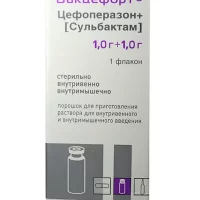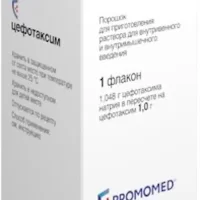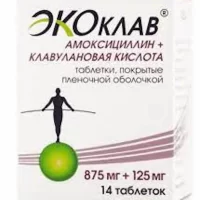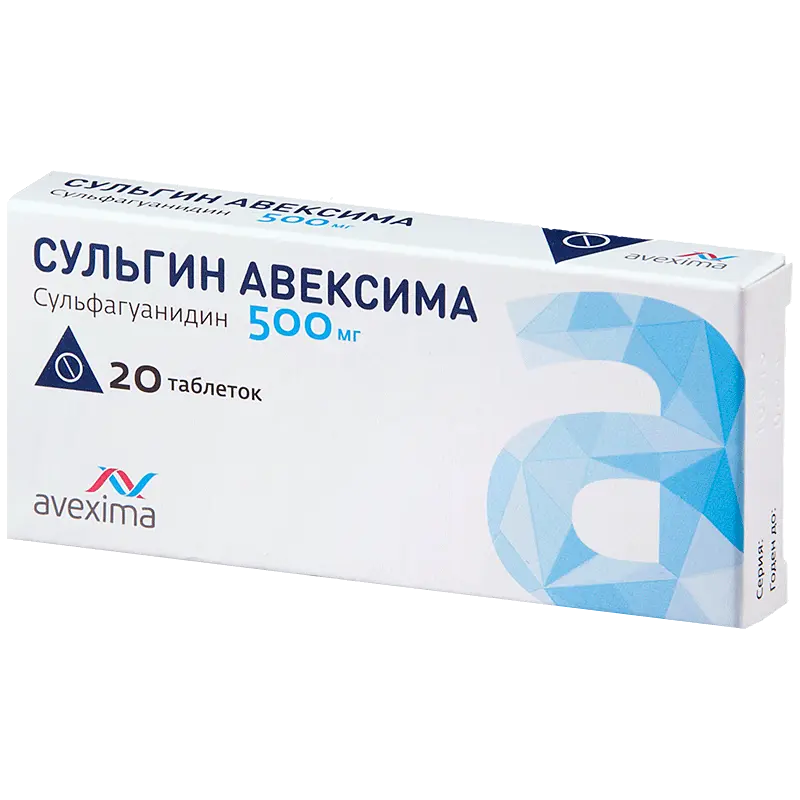Description
Thiepenem Pharmacodynamics
Thiepenem® – consists of two components: 1) imipenem, the first representative of a new class of beta-lactam antibiotics, thienamycin; and 2) cilastatin, a specific enzyme inhibitor that inhibits the metabolism of imipenem in the kidneys and significantly increases the concentration of unchanged imipenem in the urinary tract. Cilastatin has no intrinsic antibacterial activity and does not inhibit beta-lactamase of bacteria.
Beta-lactam antibiotic is a broad-spectrum antibiotic.
The drug inhibits the synthesis of the bacterial cell wall and has a bactericidal effect against a wide range of Gram-positive and Gram-negative microorganisms, aerobic and anaerobic.
Imipenem is thienamycin derivative and belongs to carbapenems group.
Cilastatin inhibits dehydropeptidase, an enzyme that metabolizes imipenem in the kidneys, which significantly increases the concentration of unchanged imipenem in the urinary tract.
Imipenem is resistant to degradation by bacterial beta-lactamase, which makes it effective against many microorganisms, such as Staphylococcus aureus, Enterococcus faecalis, Pseudomonas aeruginosa, Serratia spp., Errterobacter spp. which are resistant to most beta-lactam antibiotics, and anaerobes (Bacteroides fragilis). Antibacterial spectrum includes almost all clinically relevant pathogens.
Active against the following microorganisms in vitro as well as in vivo:
Gram-negative aerobes: Acinetobacter spp. Citrobacter spp., Enterobacter spp., Escherichia coli, Gardnerella vaginalis, Haemophilus influenzae, Haemophilus parainfluenzae, Klebsiella spp., Morganella morganii, Proteus vulgaris, Providencia rettgeri, Pseudomonas aeruginosa, Serratia spp. including Serratia marcescens;
Gram-positive aerobes: Enterococcus faecalis, Staphylococcus aureus (including strains producing penicillinase), Staphylococcus epidermidis (including strains producing penicillinase), Streptococcus agalactiae, Streptococcus pneumoniae, Streptococcus pyogenes;
Gram-positive anaerobes: Bacteroides spp. including Bacteroides fragilis, Fusobacterium spp;
Gram-positive anaerobes: Bifidobacterium spp., Clostridium spp.
spp., Peptococcus spp., Peptostreptococcus spp., Propionibacterium spp;
Imipenem has a bactericidal effect in vitro on the following microorganisms:
Gram-positive aerobes: Bacillus spp., Listeria monocytogenes, Nocardia spp., Staphylococcus saprophyticus, Streptococcus groups C, G and viridans;
Gram-negative aerobes: Aeromonas hydrophila, Alcaligenes spp., Capnocytophaga spp., Haemophilus ducreyi, Neisseria gonorrhoeae, including strains producing penicillinase, Pasteurella spp., Providencia stuartii;
Gram-anaerobes: Prevotella bivia, Prevotella disiens, Prevotella melaninogenica, Veillonella spp;
Insensitive: Enterococcus faecium, methicillin-resistant Staphylococcus spp., Xanthomonas maltophilia, Pseudomonas cepacia.
In vitro it acts synergistically with aminoglycosides against some strains of Pseudomonas aeruginosa.
- Intravenously (v/v) dropwise.
- Dosage recommendations indicate the amount of imipenem to be administered. Calculation of the total daily dose should be based on the severity of the infection, renal function and body weight of the patient. The administration is divided into several doses.
- The doses given below are for adult patients with a body weight of 70 kg or more and a CK of 70 ml/min/1.73 m2 or more. For adult patients with CKD less than 70 ml/min/1.73 m2 and/or lower body weight, the dose should be proportionally reduced.
- The average therapeutic dose for adults (imipenem calculation) when administered by IV-1-2 g/day, divided into 3-4 injections; the maximum daily dose is 4 g or 50 mg/kg, whichever is lower.
- Adults with mild infection – 250 mg 4 times daily (total daily dose 1 g), moderate infection – 500 mg 3 times daily or 1 g 2 times daily (total daily dose 1.5-2 g), severe infection – 500 mg 4 times daily (total daily dose 2 g), in life-threatening infection 1 g 3-4 times daily (total daily dose 3-4 g).
- For prophylaxis of postoperative infections in adults 1 g during anesthesia and 1 g after 3 hours. In cases of high risk surgical interventions (colorectal surgery) 500 mg is administered 8 and 16 hours after general anesthesia.
- Maximum daily doses for IV administration in adult patients (body weight > 70 kg) with renal insufficiency depending on the severity of infection and CK values (ml/min/1.73 m2):
- for mild infection severity and CK 41-70 ml/min – 250 mg every 8 h, CK 21-40 ml/min – 250 mg every 12 h, CK 6-20 ml/min – 250 mg every 12 h;
- in moderate grade infections with BK41-70 ml/min – 250 mg every 6 hours, BK 21-40 ml/min – 250 mg every 8 hours, BK 6-20 ml/min – 250 mg every 12 hours;
- in severe disease (highly sensitive strains) with a BK of 41-70 ml/min – 500 mg every 8 hours, BK 21-40 ml/min – 250 mg every 6 hours, BK 6-20 ml/min – 250 mg every 12 hours;
- in a severe course (moderately susceptible strains, including Pseudomonas aeruginosa) and BK 41-70 ml/min – 500 mg after 6 hours, BK 21-40 ml/min – 500 mg after 8 hours, BK 6-20 ml/min – 500 mg after 12 hours;
- in a severe course of life-threatening infection with a BK of 41-70 ml/min – 750 mg every 8 hours, BK21-40 ml/min – 500 mg every 6 hours, BK 6-20 ml/min – 500 mg every 12 hours.
- For more details, see the instructions for the drug.





